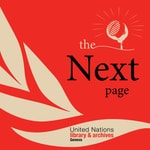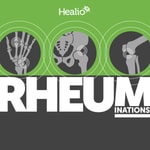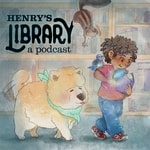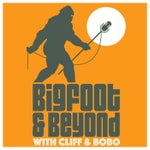Cows on the Planet – Details, episodes & analysis
Podcast details
Technical and general information from the podcast's RSS feed.
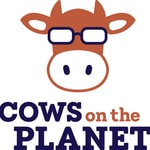
Cows on the Planet
Dr. Tim Mcallister, Dr. Kim Stanford, Dr. Kim Ominski
Frequency: 1 episode/17d. Total Eps: 37

Recent rankings
Latest chart positions across Apple Podcasts and Spotify rankings.
Apple Podcasts
🇨🇦 Canada - lifeSciences
09/05/2025#92🇨🇦 Canada - lifeSciences
08/05/2025#82🇨🇦 Canada - lifeSciences
07/05/2025#70🇨🇦 Canada - lifeSciences
06/05/2025#54🇨🇦 Canada - lifeSciences
05/05/2025#49🇨🇦 Canada - lifeSciences
04/05/2025#39🇨🇦 Canada - lifeSciences
03/05/2025#26🇨🇦 Canada - lifeSciences
14/04/2025#100🇨🇦 Canada - lifeSciences
13/04/2025#82🇨🇦 Canada - lifeSciences
12/04/2025#71
Spotify
No recent rankings available
Shared links between episodes and podcasts
Links found in episode descriptions and other podcasts that share them.
See all- https://www.silvermansound.com
6333 shares
- https://doi.org/10.1016/S2542-5196
20 shares
RSS feed quality and score
Technical evaluation of the podcast's RSS feed quality and structure.
See allScore global : 73%
Publication history
Monthly episode publishing history over the past years.
Cows of the Future
Season 2 · Episode 18
vendredi 31 mars 2023 • Duration 30:09
Join Tim and Kim and Dr. Francis Fluharty of the University of Georgia as they talk about changes in cattle over the past 60 years, whether these changes can be sustained in the future, and the desirability of selecting for cows that are excellent swimmers for future floods.
References
Herrero, M., & Thornton, P. K. (2013). Livestock and global change: Emerging issues for sustainable food systems. Proceedings of the National Academy of Sciences, 110(52), 20878–20881. https://doi.org/10.1073/pnas.1321844111
Lamm, K. W., Randall, N. L., & Fluharty, F. L. (2021). Critical issues facing the animal and food industry: A Delphi analysis. Translational Animal Science, 5(1), txaa213. https://doi.org/10.1093/tas/txaa213
Nicol, C. J. (2021). A Grand Challenge for Animal Science: Multiple Goals – Convergent and Divergent. Frontiers in Animal Science, 2, 640503. https://doi.org/10.3389/fanim.2021.640503
Nielsen, M. S. W., & Bergfeld, E. (2003). Critical perspectives in animal agriculture: A response. Journal of Animal Science, 81(11), 2908–2911. https://doi.org/10.2527/2003.81112908x
Rioja-Lang, F. C., Connor, M., Bacon, H. J., Lawrence, A. B., & Dwyer, C. M. (2020). Prioritization of Farm Animal Welfare Issues Using Expert Consensus. Frontiers in Veterinary Science, 6, 495. https://doi.org/10.3389/fvets.2019.00495
Schillo, K. K. (2003). Critical perspectives of animal agriculture: Introduction1,2. Journal of Animal Science, 81(11), 2880–2886. https://doi.org/10.2527/2003.81112880x
Kiwi cows and the BURP tax
Season 2 · Episode 17
mardi 7 mars 2023 • Duration 32:38
Join Tim and Kim as they visit with Mark Aspin, Manager of the Pastoral Greenhouse Gas Consortium in New Zealand. Much discussion of burps, farts and levies for ruminant-produced greenhouse gasses ensues.
References
Buddle, Bryce M., Michel Denis, Graeme T. Attwood, Eric Altermann, Peter H. Janssen, Ron S. Ronimus, Cesar S. Pinares-Patiño, Stefan Muetzel, and D. Neil Wedlock. “Strategies to Reduce Methane Emissions from Farmed Ruminants Grazing on Pasture.” The Veterinary Journal 188, no. 1 (April 2011): 11–17. https://doi.org/10.1016/j.tvjl.2010.02.019.
Animals. “Can You Tax a Cow’s Burps? New Zealand Will Be the First to Try.,” November 17, 2022. https://www.nationalgeographic.com/animals/article/can-you-tax-a-cows-burps-new-zealand-will-be-the-first-to-try.
Corlett, Eva. “Nineteen Years after the ‘Fart Tax’, New Zealand’s Farmers Are Fighting Emissions.” The Guardian, November 12, 2022, sec. World news. https://www.theguardian.com/world/2022/nov/12/19-years-after-the-fart-tax-new-zealands-farmers-are-fighting-emissions.
González-Recio, O., J. López-Paredes, L. Ouatahar, N. Charfeddine, E. Ugarte, R. Alenda, and J.A. Jiménez-Montero. “Mitigation of Greenhouse Gases in Dairy Cattle via Genetic Selection: 2. Incorporating Methane Emissions into the Breeding Goal.” Journal of Dairy Science 103, no. 8 (August 2020): 7210–21. https://doi.org/10.3168/jds.2019-17598.
Hayek, Matthew N, and Scot M Miller. “Underestimates of Methane from Intensively Raised Animals Could Undermine Goals of Sustainable Development.” Environmental Research Letters 16, no. 6 (June 1, 2021): 063006. https://doi.org/10.1088/1748-9326/ac02ef.
Hickey, Sharon M., Wendy E. Bain, Timothy P. Bilton, Gordon J. Greer, Sara Elmes, Brooke Bryson, Cesar S. Pinares-Patiño, et al. “Impact of Breeding for Reduced Methane Emissions in New Zealand Sheep on Maternal and Health Traits.” Frontiers in Genetics 13 (September 30, 2022): 910413. https://doi.org/10.3389/fgene.2022.910413.
McGregor, Andrew, Lauren Rickards, Donna Houston, Michael K. Goodman, and Milena Bojovic. “The Biopolitics of Cattle Methane Emissions Reduction: Governing Life in a Time of Climate Change.” Antipode 53, no. 4 (July 2021): 1161–85. https://doi.org/10.1111/anti.12714.
Press ·, The Associated. “New Zealand’s Plan to Tax Cow Burps Condemned by Farmers | CBC News.” CBC, October 11, 2022. https://www.cbc.ca/news/world/new-zealand-proposes-taxing-cow-burps-1.6612302.
Smith, Ian. “Farmers Protest against New Zealand’s Proposed ‘Cow Burp Tax.’” euronews, October 20, 2022. https://www.euronews.com/green/2022/10/20/cow-burps-to-be-taxed-under-world-first-proposals-by-new-zealand.
Cows that Kill
Season 2 · Episode 8
mercredi 3 août 2022 • Duration 25:09
Join Tim and Kim as they discuss situations most likely to lead to injury or death by bovine with Dr. Karen Schwartzkopf-Genswein in a shameless ploy to tap into the true crime podcast fanbase.
Citations
Black, R., & Krawczel, P. (2016). A Case Study of Behaviour and Performance of Confined or Pastured Cows During the Dry Period. Animals, 6(7), 41. https://doi.org/10.3390/ani6070041
Eusebi, P. G., Sevane, N., O’Rourke, T., Pizarro, M., Boeckx, C., & Dunner, S. (2022). Age Effects Aggressive Behavior: RNA-Seq Analysis in Cattle with Implications for Studying Neoteny Under Domestication. Behavior Genetics, 52(2), 141–153. https://doi.org/10.1007/s10519-021-10097-1
No need to tolerate aggressive cows. (2011). Retrieved July 27, 2022, from https://www.canadiancattlemen.ca/features/why-do-we-tolerate-aggressive-cows/
Westgarth, C., & McIntyre, M. (2017). When cows attack: How dangerous are cattle and how can you stay safe around them? The Conversation. Retrieved July 27, 2022, from http://theconversation.com/when-cows-attack-how-dangerous-are-cattle-and-how-can-you-stay-safe-around-them-79524
Why and how to read a cow or bull. (2004). Retrieved July 27, 2022, from https://nature.berkeley.edu/ucce50/ag-labor/7article/article29.htm
Should we be eating invasive species instead of beef?
Season 2 · Episode 7
mercredi 20 juillet 2022 • Duration 33:52
Join Tim and Kim and Dr. Manuel Juarez of Agriculture and Agri-Food Canada as they discus eating invasive species such as wild boars instead of beef and the pros and cons of helicopter gunships for wild boar hunting.
Citation
Aschim, R. A., & Brook, R. K. (2019). Evaluating Cost-Effective Methods for Rapid and Repeatable National Scale Detection and Mapping of Invasive Species Spread. Scientific Reports, 9(1), 7254. https://doi.org/10.1038/s41598-019-43729-y
Bulté, G., Robinson, S. A., Forbes, M. R., & Marcogliese, David. J. (2012). Is There Such Thing as a Parasite Free Lunch? The Direct and Indirect Consequences of Eating Invasive Prey. EcoHealth, 9(1), 6–16. https://doi.org/10.1007/s10393-012-0757-7
Croft, S., Franzetti, B., Gill, R., & Massei, G. (2020). Too many wild boar? Modelling fertility control and culling to reduce wild boar numbers in isolated populations. PLOS ONE, 15(9), e0238429. https://doi.org/10.1371/journal.pone.0238429
Curtis, P. D. (n.d.). After Decades of Suburban Deer Research and Management in the Eastern United States: Where Do We Go From Here? 18.
Fiala, M., Marveggio, D., Viganò, R., Demartini, E., Nonini, L., & Gaviglio, A. (2020). LCA and wild animals: Results from wild deer culled in a northern Italy hunting district. Journal of Cleaner Production, 244, 118667. https://doi.org/10.1016/j.jclepro.2019.118667
Gagnier, M., Laurion, I., & DeNicola, A. J. (2020). Control and Surveillance Operations to Prevent Chronic Wasting Disease Establishment in Free-Ranging White-Tailed Deer in Québec, Canada. Animals, 10(2), 283. https://doi.org/10.3390/ani10020283
Gamborg, C., Sandøe, P., & Palmer, C. (2020). Ethical management of wildlife. Lethal versus nonlethal control of white‐tailed deer. Conservation Science and Practice, 2(4). https://doi.org/10.1111/csp2.171
Gaviglio, A., Marescotti, M., & Demartini, E. (2018). The Local Value Chain of Hunted Red Deer Meat: A Scenario Analysis Based on a Northern Italian Case Study. Resources, 7(2), 34. https://doi.org/10.3390/resources7020034
Johann, F., Handschuh, M., Linderoth, P., Dormann, C. F., & Arnold, J. (2020). Adaptation of wild boar (Sus scrofa) activity in a human-dominated landscape. BMC Ecology, 20(1), 4. https://doi.org/10.1186/s12898-019-0271-7
Keuling, O., Baubet, E., Duscher, A., Ebert, C., Fischer, C., Monaco, A., Podgórski, T., Prevot, C., Ronnenberg, K., Sodeikat, G., Stier, N., & Thurfjell, H. (2013). Mortality rates of wild boar Sus scrofa L. in central Europe. European Journal of Wildlife Research, 59(6), 805–814. https://doi.org/10.1007/s10344-013-0733-8
Koons, D. N., Rockwell, R. F., & Aubry, L. M. (2014). Effects of exploitation on an overabundant species: The lesser snow goose predicament. Journal of Animal Ecology, 83(2), 365–374. https://doi.org/10.1111/1365-2656.12133
Meng, X. J., Lindsay, D. S., & Sriranganathan, N. (2009). Wild boars as sources for infectious diseases in livestock and humans. Philosophical Transactions of the Royal Society B: Biological Sciences, 364(1530), 2697–2707. https://doi.org/10.1098/rstb.2009.0086
Niewiadomska, K., Kosicka-Gębska, M., Gębski, J., Gutkowska, K., Jeżewska-Zychowicz, M., & Sułek, M. (2020). Game Meat Consumption—Conscious Choice or Just a Game? Foods, 9(10), 1357. https://doi.org/10.3390/foods9101357
Nuñez, M. A., Kuebbing, S., Dimarco, R. D., & Simberloff, D. (2012). Invasive Species: To eat or not to eat, that is the question: Eating invasive species. Conservation Letters, 5(5), 334–341. https://doi.org/10.1111/j.1755-263X.2012.00250.x
Risch, D. R., Ringma, J., & Price, M. R. (2021). The global impact of wild pigs (Sus scrofa) on terrestrial biodiversity. Scientific Reports, 11(1), 13256. https://doi.org/10.1038/s41598-021-92691-1
Seaman, A. N. (n.d.). Eating invasives: Chefs as an avenue to control through consumption. 19.
Silveira de Oliveira, Ê., Ludwig da Fontoura Rodrigues, M., Machado Severo, M., Gomes dos Santos, T., & Kasper, C. B. (2020). Who’s afraid of the big bad boar? Assessing the effect of wild boar presence on the occurrence and activity patterns of other mammals. PLOS ONE, 15(7), e0235312. https://doi.org/10.1371/journal.pone.0235312
More than milk and meat from cows?
Season 2 · Episode 6
vendredi 8 juillet 2022 • Duration 26:01
Join Tim and Kim as they talk with Dr. Hsin Huang, Secretary General of the International Meat Secretariat about some of the surprising products that come from cows other than milk and meat.
Citations
Alam, A. Y. (n.d.). The challenge of dealing with animal derived ingredients in medical/surgical products. 3.
Alao, B., Falowo, A., Chulayo, A., & Muchenje, V. (2017). The Potential of Animal By-Products in Food Systems: Production, Prospects and Challenges. Sustainability, 9(7), 1089. https://doi.org/10.3390/su9071089
Jayathilakan, K., Sultana, K., Radhakrishna, K., & Bawa, A. S. (2012). Utilization of byproducts and waste materials from meat, poultry and fish processing industries: A review. Journal of Food Science and Technology, 49(3), 278–293. https://doi.org/10.1007/s13197-011-0290-7
Khouw, B. T., Rubin, L. J., & Berry, B. (n.d.). Meat Animal By-Products of Pharmaceutical and Food Interest. 8.
Quin, J. (2020). Medicines/pharmaceuticals of animal origin. 33.
Singh, N., Halliday, H. L., Stevens, T. P., Suresh, G., Soll, R., & Rojas-Reyes, M. X. (2015). Comparison of animal-derived surfactants for the prevention and treatment of respiratory distress syndrome in preterm infants. Cochrane Database of Systematic Reviews. https://doi.org/10.1002/14651858.CD010249.pub2
Toldrá, F., Reig, M., & Mora, L. (2021). Management of meat by- and co-products for an improved meat processing sustainability. Meat Science, 181, 108608. https://doi.org/10.1016/j.meatsci.2021.108608
Meat substitutes vs beef
Season 2 · Episode 5
vendredi 24 juin 2022 • Duration 31:08
Citations
Curtain, F., & Grafenauer, S. (2019). Plant-Based Meat Substitutes in the Flexitarian Age: An Audit of Products on Supermarket Shelves. Nutrients, 11(11), 2603. https://doi.org/10.3390/nu11112603
Davitt, E. D., Winham, D. M., Heer, M. M., Shelley, M. C., & Knoblauch, S. T. (2021). Predictors of Plant-Based Alternatives to Meat Consumption in Midwest University Students. Journal of Nutrition Education and Behavior, 53(7), 564–572. https://doi.org/10.1016/j.jneb.2021.04.459
He, J., Evans, N. M., Liu, H., & Shao, S. (2020). A review of research on plant‐based meat alternatives: Driving forces, history, manufacturing, and consumer attitudes. Comprehensive Reviews in Food Science and Food Safety, 19(5), 2639–2656. https://doi.org/10.1111/1541-4337.12610
Lynch, H., Johnston, C., & Wharton, C. (2018). Plant-Based Diets: Considerations for Environmental Impact, Protein Quality, and Exercise Performance. Nutrients, 10(12), 1841. https://doi.org/10.3390/nu10121841
Michel, F., Hartmann, C., & Siegrist, M. (2021). Consumers’ associations, perceptions and acceptance of meat and plant-based meat alternatives. Food Quality and Preference, 87, 104063. https://doi.org/10.1016/j.foodqual.2020.104063
Santo, R. E., Kim, B. F., Goldman, S. E., Dutkiewicz, J., Biehl, E. M. B., Bloem, M. W., Neff, R. A., & Nachman, K. E. (2020). Considering Plant-Based Meat Substitutes and Cell-Based Meats: A Public Health and Food Systems Perspective. Frontiers in Sustainable Food Systems, 4, 134. https://doi.org/10.3389/fsufs.2020.00134
van Vliet, S., Kronberg, S. L., & Provenza, F. D. (2020). Plant-Based Meats, Human Health, and Climate Change. Frontiers in Sustainable Food Systems, 4, 128. https://doi.org/10.3389/fsufs.2020.00128
Why is beef so expensive?
Season 2 · Episode 4
jeudi 9 juin 2022 • Duration 32:06
Literature Cited
Brooks, S., Leaver, A., Spence, M., Elliott, C. T., & Dean, M. (2017). Pragmatic engagement in a low trust supply chain: Beef farmers’ perceptions of power, trust and agency. Competition & Change, 21(2), 114–131. https://doi.org/10.1177/1024529417691053
Chamanara, S., Goldstein, B., & Newell, J. P. (2021). Where’s the beef? Costco’s meat supply chain and environmental justice in California. Journal of Cleaner Production, 278, 123744. https://doi.org/10.1016/j.jclepro.2020.123744
Fernandes, A. M., de Souza Teixeira, O., Rios, H. V., Canozzi, M. E. A., Schultz, G., & Barcellos, J. O. J. (2019). Insights of innovation and competitiveness in meat supply chains. International Food and Agribusiness Management Review, 22(3), 413–427. https://doi.org/10.22434/IFAMR2018.0031
Ijaz, M., Yar, M. K., Badar, I. H., Ali, S., Islam, Md. S., Jaspal, M. H., Hayat, Z., Sardar, A., Ullah, S., & Guevara-Ruiz, D. (2021). Meat Production and Supply Chain Under COVID-19 Scenario: Current Trends and Future Prospects. Frontiers in Veterinary Science, 8, 660736. https://doi.org/10.3389/fvets.2021.660736
Ma, M., & Lusk, J. (2021). Concentration and Resilience in the U.S. Meat Supply Chains (No. w29103; p. w29103). National Bureau of Economic Research. https://doi.org/10.3386/w29103
Meidayanti, K., Arkeman, Y., & Sugiarto. (2019). Analysis and design of beef supply chain traceability system based on blockchain technology. IOP Conference Series: Earth and Environmental Science, 335(1), 012012. https://doi.org/10.1088/1755-1315/335/1/012012
Nastasijević, I., Lakićević, B., & Petrović, Z. (2017). Cold chain management in meat storage, distribution and retail: A review. IOP Conference Series: Earth and Environmental Science, 85, 012022. https://doi.org/10.1088/1755-1315/85/1/012022
Patrice, T. (n.d.). COVID-19 and the Beef Supply Chain: An Overview. 12.
Peel, D. (2021). Beef supply chains and the impact of the COVID-19 pandemic in the United States. Animal Frontiers, 11(1), 33–38. https://doi.org/10.1093/af/vfaa054
Rude, J. (2021). COVID‐19 and the Canadian cattle/beef sector: A second look. Canadian Journal of Agricultural Economics/Revue Canadienne d’agroeconomie, 69(2), 233–241. https://doi.org/10.1111/cjag.12277
Livestock and global food security
Season 2 · Episode 3
mercredi 25 mai 2022 • Duration 32:50
Literature Citied
Adesogan, A. T., Havelaar, A. H., McKune, S. L., Eilittä, M., & Dahl, G. E. (2020). Animal source foods: Sustainability problem or malnutrition and sustainability solution? Perspective matters. Global Food Security, 25, 100325. https://doi.org/10.1016/j.gfs.2019.100325
Balehegn, M., Duncan, A., Tolera, A., Ayantunde, A. A., Issa, S., Karimou, M., Zampaligré, N., André, K., Gnanda, I., Varijakshapanicker, P., Kebreab, E., Dubeux, J., Boote, K., Minta, M., Feyissa, F., & Adesogan, A. T. (2020). Improving adoption of technologies and interventions for increasing supply of quality livestock feed in low- and middle-income countries. Global Food Security, 26, 100372. https://doi.org/10.1016/j.gfs.2020.100372
Leroy, G., Boettcher, P., Besbes, B., Peña, C. R., Jaffrezic, F., & Baumung, R. (2020). Food securers or invasive aliens? Trends and consequences of non-native livestock introgression in developing countries. Global Food Security, 26, 100420. https://doi.org/10.1016/j.gfs.2020.100420
Vipham, J. L., Amenu, K., Alonso, S., Ndahetuye, J.-B., Zereyesus, Y., Nishimwe, K., Bowers, E., Maier, D., Sah, K., Havelaar, A., & Grace, D. (n.d.). No food security without food safety: Lessons from livestock related research. 16.
How much do cows contribute to Amazon deforestation?
Season 2 · Episode 2
mercredi 11 mai 2022 • Duration 36:45
Literature Cited
Kaimowitz, D., Mertens, B., Wunder, S., & Pacheco, P. (n.d.). Cattle ranching and deforestation in Brazil’s Amazon. 10.
Rajão, R., & Georgiadou, Y. (2014). Blame Games in the Amazon: Environmental Crises and the Emergence of a Transparency Regime in Brazil. Global Environmental Politics, 14(4), 97–115. https://doi.org/10.1162/GLEP_a_00259
Rajão, R., Soares-Filho, B., Nunes, F., Börner, J., Machado, L., Assis, D., Oliveira, A., Pinto, L., Ribeiro, V., Rausch, L., Gibbs, H., & Figueira, D. (2020). The rotten apples of Brazil’s agribusiness. Science, 369(6501), 246–248. https://doi.org/10.1126/science.aba6646
Rajão, R., & Vurdubakis, T. (2013). On the Pragmatics of Inscription: Detecting Deforestation in the Brazilian Amazon. Theory, Culture & Society, 30(4), 151–177. https://doi.org/10.1177/0263276413486203
Shukla, J., Nobre, C., & Sellers, P. (1990). Amazon Deforestation and Climate Change. Science, 247(4948), 1322–1325. https://doi.org/10.1126/science.247.4948.1322
Silva Junior, C. H. L., Pessôa, A. C. M., Carvalho, N. S., Reis, J. B. C., Anderson, L. O., & Aragão, L. E. O. C. (2021). The Brazilian Amazon deforestation rate in 2020 is the greatest of the decade. Nature Ecology & Evolution, 5(2), 144–145. https://doi.org/10.1038/s41559-020-01368-x
Skidmore, M. E., Moffette, F., Rausch, L., Christie, M., Munger, J., & Gibbs, H. K. (2021). Cattle ranchers and deforestation in the Brazilian Amazon: Production, location, and policies. Global Environmental Change, 68, 102280. https://doi.org/10.1016/j.gloenvcha.2021.102280
Soares-Filho, B., Rajão, R., Macedo, M., Carneiro, A., Costa, W., Coe, M., Rodrigues, H., & Alencar, A. (2014). Cracking Brazil’s Forest Code. Science, 344(6182), 363–364. https://doi.org/10.1126/science.1246663
Walker, N. F., Patel, S. A., & Kalif, K. A. B. (2013). From Amazon Pasture to the High Street: Deforestation and the Brazilian Cattle Product Supply Chain. Tropical Conservation Science, 6(3), 446–467. https://doi.org/10.1177/194008291300600309
Walker, R., Moran, E., & Anselin, L. (2000). Deforestation and Cattle Ranching in the Brazilian Amazon: External Capital and Household Processes. World Development, 28(4), 683–699. https://doi.org/10.1016/S0305-750X(99)00149-7
Cows in Ghana
Season 2 · Episode 1
mercredi 27 avril 2022 • Duration 36:06
Citation
Adams, F., Ohene-Yankyera, K., Aidoo, R., & Wongnaa, C. A. (2021). Economic benefits of livestock management in Ghana. Agricultural and Food Economics, 9(1), 17. https://doi.org/10.1186/s40100-021-00191-7
Addah, W. (2010). Impact of ethnic conflicts on cattle population and production in the eastern corridor of the northern region of Ghana. International Journal of Tropical Agriculture and Food Systems, 3(1). https://doi.org/10.4314/ijotafs.v3i1.50015
Balehegn, M., Kebreab, E., Tolera, A., Hunt, S., Erickson, P., Crane, T. A., & Adesogan, A. T. (2021). Livestock sustainability research in Africa with a focus on the environment. Animal Frontiers, 11(4), 47–56. https://doi.org/10.1093/af/vfab034
Chebo, C., & Alemayehu, K. (n.d.). Trends of cattle genetic improvement programs in Ethiopia: Challenges and opportunities. 17.
Ilemobade, A. A. (n.d.). Tsetse and trypanosomosis in Africa: The challenges, the opportunities. 6.
Nyantakyi-Frimpong, H., Colecraft, E. K., Awuah, R. B., Adjorlolo, L. K., Wilson, M. L., & Jones, A. D. (2018). Leveraging smallholder livestock production to reduce anemia: A qualitative study of three agroecological zones in Ghana. Social Science & Medicine, 212, 191–202. https://doi.org/10.1016/j.socscimed.2018.07.028
Otte, J., Pica-Ciamarra, U., & Morzaria, S. (2019). A Comparative Overview of the Livestock-Environment Interactions in Asia and Sub-saharan Africa. Frontiers in Veterinary Science, 6, 37. https://doi.org/10.3389/fvets.2019.00037
University of Ghana, Obese, F., Acheampong, D., Darfour-Oduro, K., & Animal Research Institute, Ghana. (2013). Growth and reproductive traits of friesian X sanga crossbred cattle in the Accra plains of Ghana. African Journal of Food, Agriculture, Nutrition and Development, 13(57), 7357–7371. https://doi.org/10.18697/ajfand.57.11440
The role of livestock in food security, poverty reduction and wealth creation in West Africa. (2020). FAO. https://doi.org/10.4060/ca8385en
EVALUATION OF EXISTING AND POTENTIAL FEED RESOURCES FOR RUMINANT PRODUCTION IN NORTHERN GHANA. (n.d.). 36.

